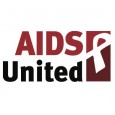The United Nation’s (UN) General Assembly will convene a High Level Meeting (HLM) on Ending AIDS June 8 to June 10 at the UN headquarters in New York City. The current General Assembly President, Mogens Lykketoft (Denmark) and the UN Secretary-General, Ban Ki-moon, will welcome heads of state and government, other senior government officials, representatives of international organizations, the private sector, and civil society, including people living with HIV and other stakeholders, to the meeting.
The main expected outcome of the HLM is adoption of a new Political Declaration on Ending AIDS that picks up from the 2011 Political Declaration and aligns with the global commitment to end the AIDS epidemic and the “fast-track” approach called for in the UNAIDS 2016–2021 Strategy. This year’s HLM also provides an opportunity to focus the world’s attention on the progress that has been made since the 2011 HLM and the remaining gaps and challenges that must be faced to reach the goal of ending the AIDS epidemic by 2030. The meeting will also be an opportunity to view the U.S. HIV epidemic in the context of the global HIV pandemic.
The “Zero Draft” of the 2016 Political Declaration, “On the Fast-Track to End AIDS in the Age of Sustainable Development,” was released in April. The draft declaration lays out 74 points that are a mixture of statements about HIV and the people affected by HIV around the world, reaffirmation of the 2030 goal, and specific commitments needed to reach the goal with a fast-track strategy. In a statement on the Zero Draft, the Global Forum on MSM and HIV (MSMGF) notes highlights of the draft declaration:
- Several of the draft’s points address gender and sexual and reproductive health. One point embraces gender equality and empowerment of women and girls and explicitly calls for a commitment “to end all forms of violence against women and girls…”
- The draft notes the “insufficient access” to HIV prevention services for key populations that evidence shows are at higher risk of HIV. Included among key populations are people who inject drugs, sex workers, men who have sex with men, and transgender people. One point directly mentions lack of the progress in reducing transmission among people who inject drugs and calls out the “insufficient coverage of highly effective harm reduction programmes…”
- The draft directly mentions the need to reduce inequalities and states, “ensuring the rights of all people to access high-quality HIV services and commodities will narrow the inequalities gap within and among countries.”
- The draft reaffirms that realization of all human rights and fundamental freedoms for all people is an “essential element in the global response to the AIDS epidemic…” and calls for removing “punitive laws, policies, and practices that block access to HIV services…” Among specific types of laws that should be removed, the draft mentions laws related to “overly broad criminalization of HIV transmission, same-sex sexual relations, sex work, and drug use…”
In response to a disappointing development, on June 3 MSMGF, the Global Network of Sex Work Projects (NSWP) and the Global Platform to Fast-Track the HIV and Human Rights Responses Among Gay and Bisexual Men and Other Men Who Have Sex with Men (The Platform) issued a statement noting a new draft of the Political Declaration. According to the statement the new draft erases or minimizes many of the direct and specific references of key populations. Men who have sex with men, sex workers, people who inject drugs, and transgender people are key populations affected by the changes to the draft. The new draft also eliminates the call to repeal punitive and discriminatory laws and policies such as those related to HIV criminalization, same-sex sexual relations, sex work, and drug use. The statement calls on advocates to contact their governments to protest the changes to the draft Political Declaration and to return to the original language regarding key populations and repealing punitive and discriminatory laws and policies.
In addition to the official sessions of the HLM, several side events will take place in the days leading up to the meeting and during the HLM. Although many countries’ official HLM delegations, including the U.S., will include representatives from civil society, the side events will offer expanded opportunities for people living with HIV and other stakeholders to participate in the global focus on HIV and to raise and highlight issues that go beyond the discussions that will take place in the HLM.
The U.S. is in a unique position in relation to the HLM. The country continues to be the leading donor nation in the global response to HIV. But the U.S. is also an affected nation, with an HIV epidemic that remains at crisis levels for key populations and regions and jurisdictions across the country. Domestic HIV advocates, providers, and consumers of HIV services should approach next week’s HLM from those two sides. The U.S. has a lot to offer the global response and we should advocate maintaining and expanding the nation’s support. But there is also much that we can learn from our colleagues around the world. After 35 years, we have neither closed the gaps nor eliminated the inequalities and disparities that challenge achieving an end to the AIDS epidemic. The HLM could be an opportunity for us to commit to applying the global goals and commitments to our own backyard.








Comments
Comments